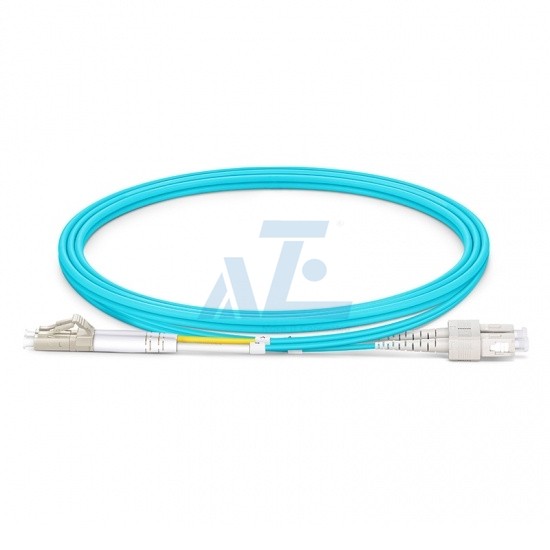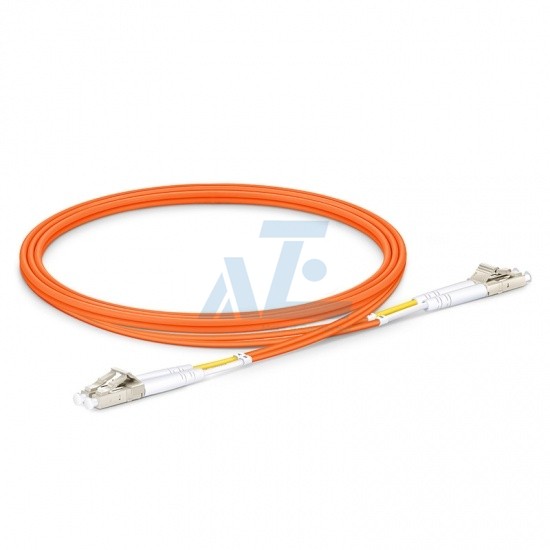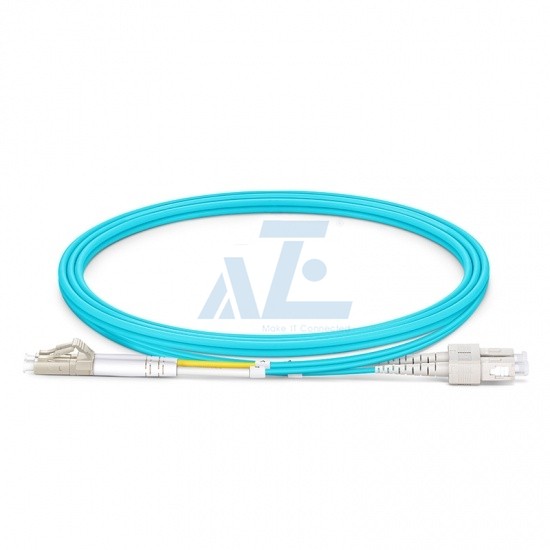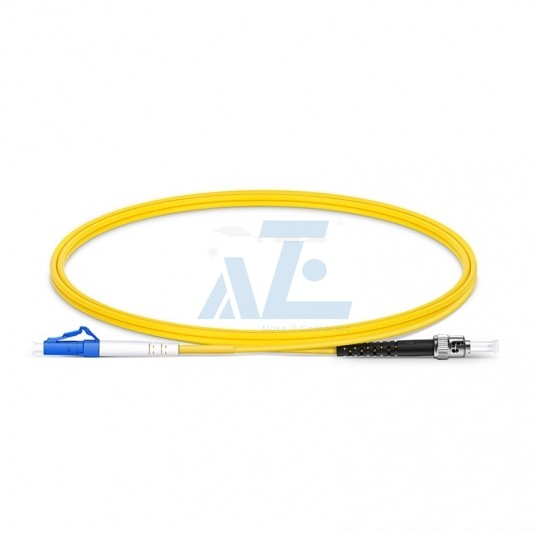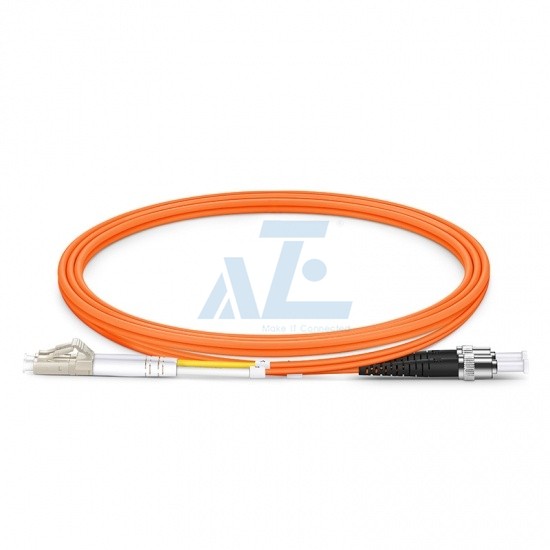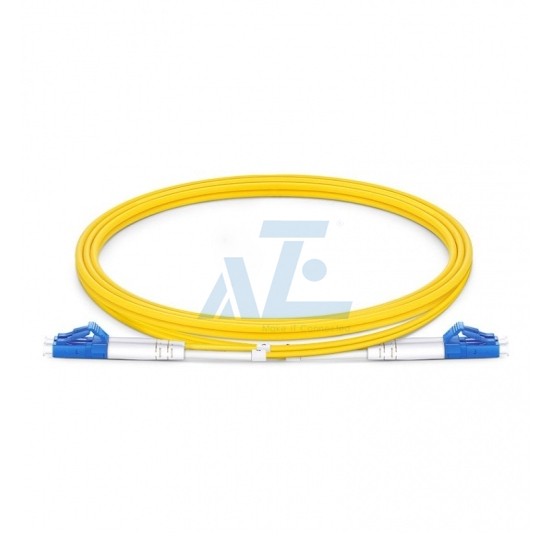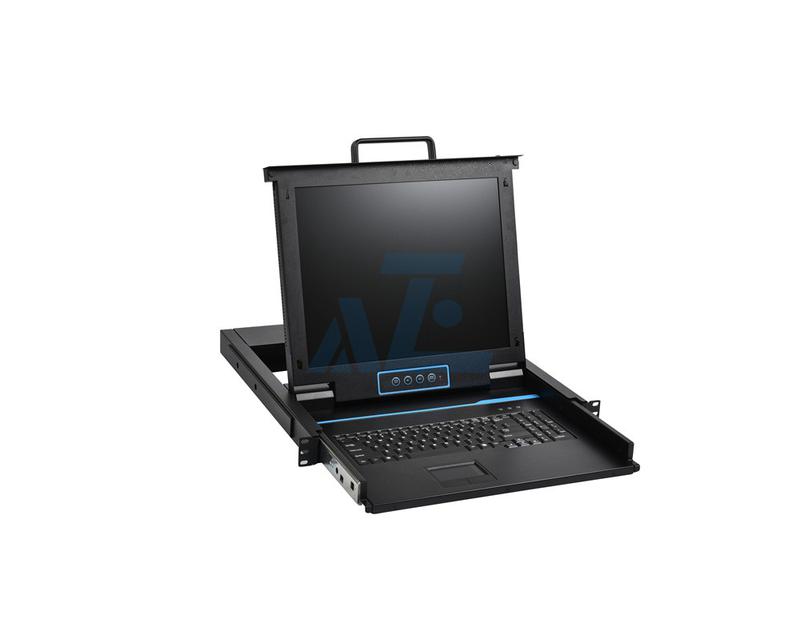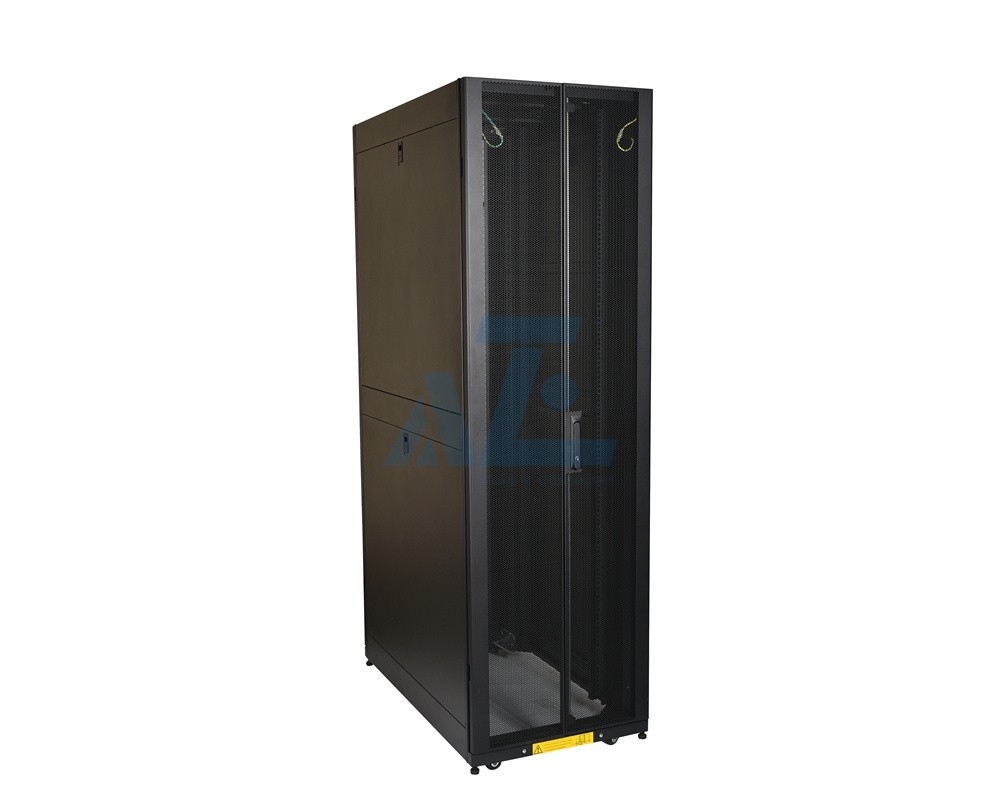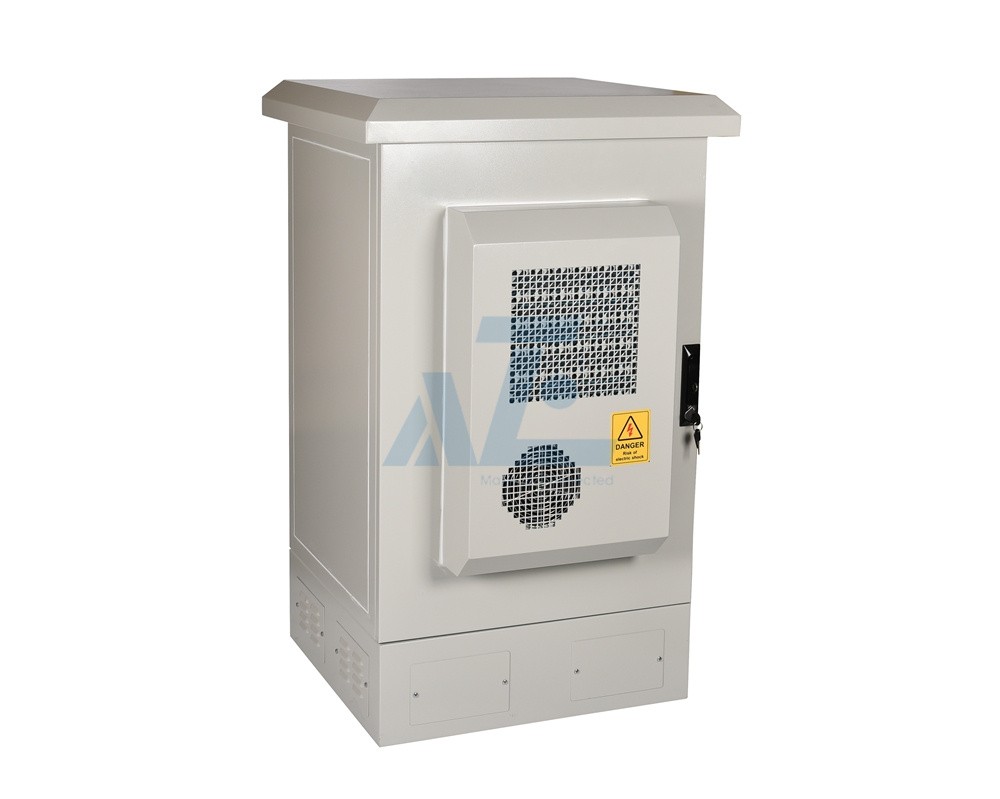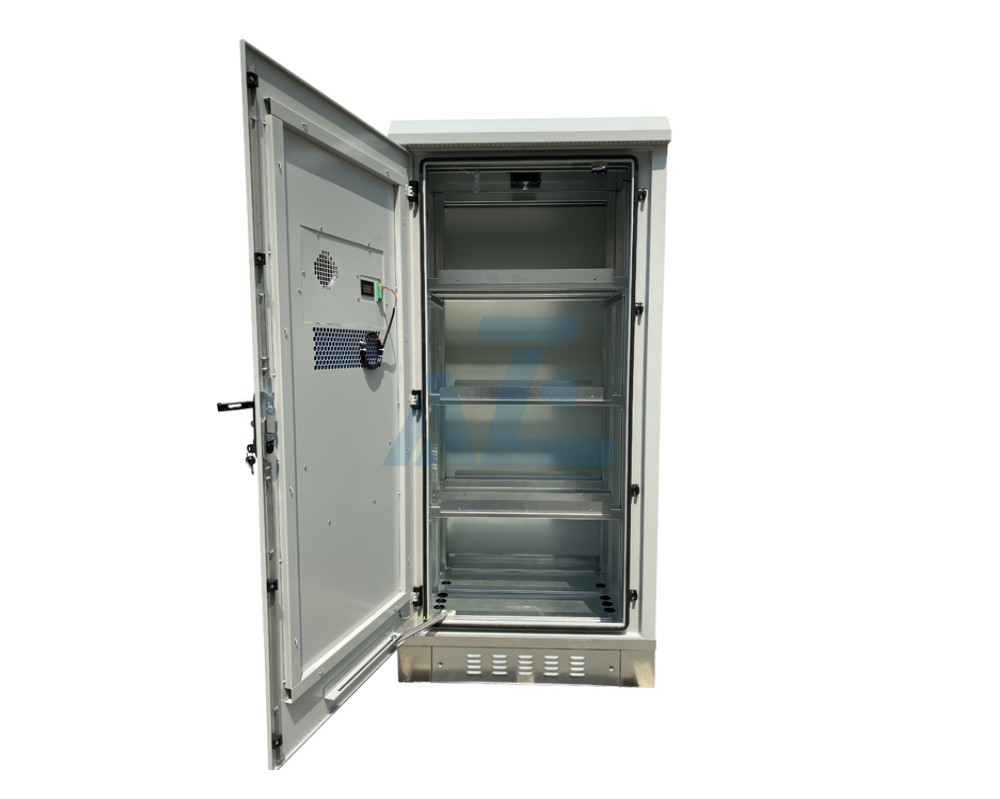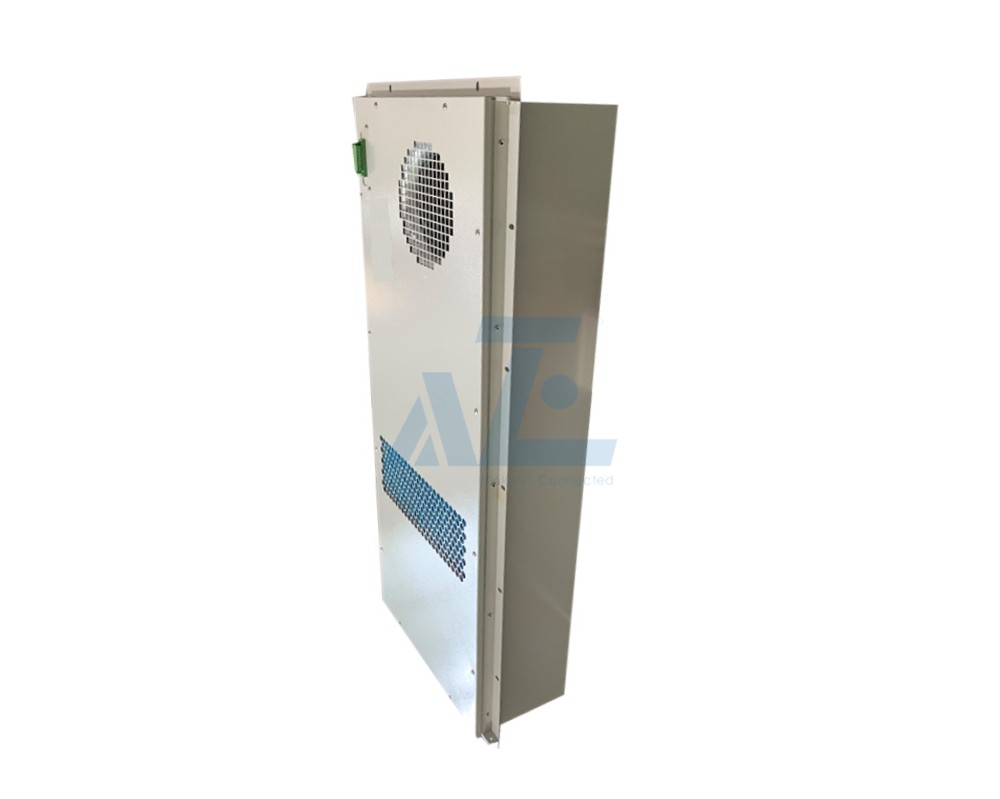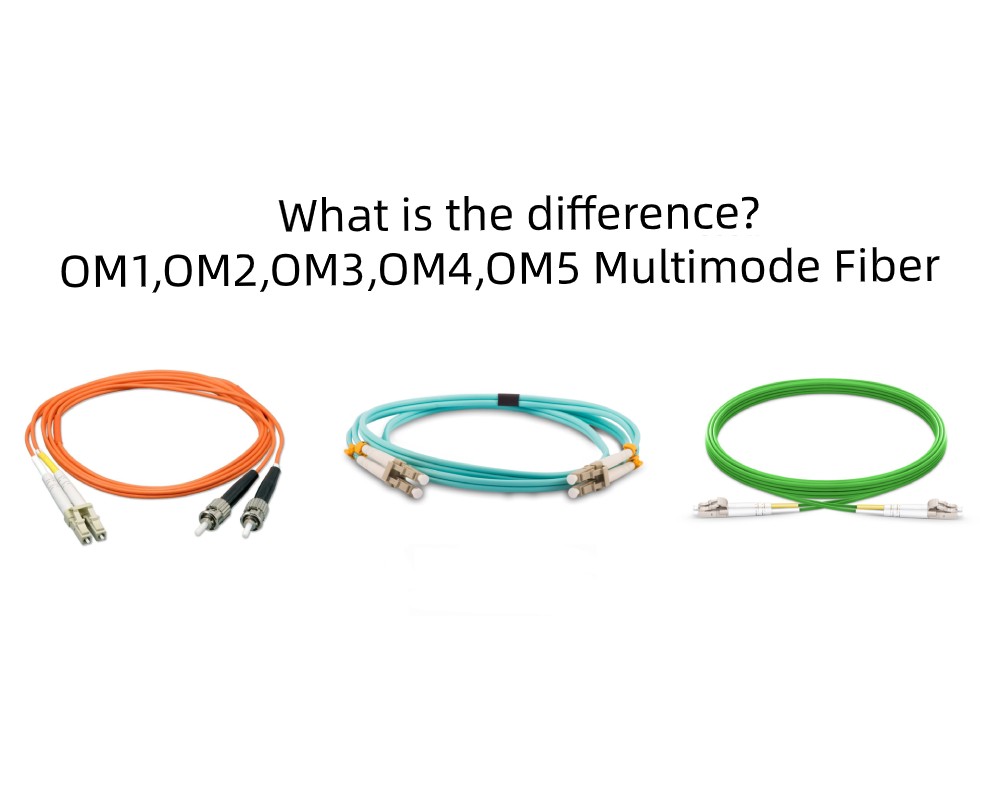How to Choose Singlemode or Multimode Fiber Cable
How to Choose Singlemode or Multimode Fiber Cable
Apr 18 , 2021"Do you need singlemode or multimode fiber?" This is a difficulty decision to make before you decide for sure that the fiber is the right way to go for the project,although singlemode fiber (SMF) and multimode fiber (MMF) cable types are widely used in various applications, people are confused for the singlemode fiber and multimode fiber.
What is the difference between singlemode and multimode fiber?
Singlemode refers to the fiber enables one type of light mode to be propagated at a time, while multimode refers to the fiber can propagate multiple modes. The differences between singlemode and multimode fiber mainly: fiber core diameter, wavelength & light source, bandwidth, color sheath, distance and cost.
- Core Diameter
Singlemode fiber core diameter is much smaller than multimode fiber. Its typical core diameter is 9 µm even if there are others available. And multimode fiber core diameter is 50 µm and 62.5 µm typically, which enables it to have higher "light gathering" ability and simplify connections. The cladding diameter of single mode and multimode fiber is 125 µm.
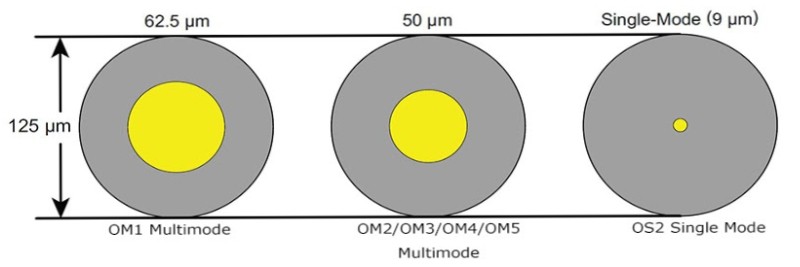
Pic 1: Opitcal fiber core diameters
The attenuation of multimode fiber is higher than SM fiber because of its larger core diameter. The fiber core of single mode cable is very narrow, so the light that passes through these fiber optical cables is not reflected too many times, which keeps the attenuation to a minimum.
| 9/125 Singlemode Fiber Simplex | 50/125 OM3 Multimode Fiber | ||
| Attenuation at 1310nm | 0.36 dB/km | Attenuation at 850 nm | 3.0 dB/km |
| Attenuation at 1550nm | 0.22 dB/km | Attenuation at 1300 nm | 1.0 dB/km |
-
Wavelength & Light Source
Due to the large core size of multimode fiber, some low-cost light sources like LEDs (light-emitting diodes) and VCSELs (vertical cavity surface-emitting lasers) that works at the 850nm and 1300nm wavelength are used in multimode fiber cables. While the singlemode fiber often uses a laser or laser diodes to produce light injected into the cable. And the commonly used single mode fiber wavelength is 1310 nm and 1550 nm.
-
Bandwidth
Multimode fiber bandwidth is limited by its light mode and the maximum bandwidth at present is 28000 MHz*km of OM5 fiber. While single mode fiber bandwidth is unlimited theoretically because it allows only one light mode to pass through at a time.
-
Color Sheath
According to the TIA-598C standard definition, for non-military applications, single mode cable is coated with yellow outer sheath, and multimode fiber is coated with orange or aqua jacket.
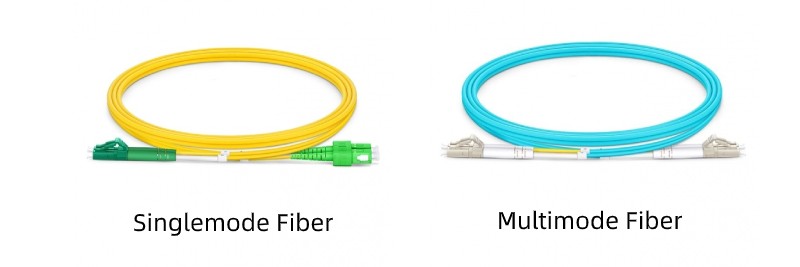
Pic 2: Color sheath of SMF and MMF
-
Singlemode vs Multimode Fiber Distance
It’s known that single mode fiber is suitable for long-distance applications, while multimode optical fiber is designed for short-distance runs. Then when it comes to single mode vs multimode fiber distance, what’s the quantifiable differences?
| Fiber Optic Cable Type | Fiber Cable Distance | |||||||
| Fast Ethernet 100BASE-FX | 1Gb Ethernet 1000BASE-SX | 1Gb Ethernet 1000BASE-LX | 10Gb BASE SE-SR | 25Gb Base SR-S | 40Gb Base SR4 | 100Gb Base SR10 | ||
| Singlemode fiber | OS2 | 200m | 5,000m | 5,000m | 10km | / | / | / |
| Multimode fiber | OM1 | 200m | 275m | 550m (mode conditioning patch cable required) | / | / | / | / |
| OM2 | 200m | 550m | / | / | / | / | ||
| OM3 | 200m | 550m | 300m | 70m | 100m | 100m | ||
| OM4 | 200m | 550m | 400m | 100m | 150m | 150m | ||
| OM5 | 200m | 550m | 300m | 100m | 400m | 400m | ||
From the chart, we can see that single mode fiber distance is much longer than that of multimode fiber cables at the data rate from 1G to 10G, but OM3/OM4/OM5 multimode fiber supports a higher data rate. Because multimode optical fiber has a large core size and supports more than one light mode, its fiber distance is limited by modal dispersion which is a common phenomenon in multimode step-index fiber. While single mode fiber is not. That’s the essential difference between them. In addition, OS2 single mode fiber could support longer distances in 40G and 100G links, which is not listed in the table.
-
Singlemode vs Multimode Fiber Cost
Currently, singlemode fiber is typically less expensive than multimode fiber, but it’s important to keep other price factors in mind as well.Most fiber systems use transceivers, which combine a transmitter and receiver into a single module using fiber optic technology to send and receive data over an optical network. Right now, the price of multimode transceivers is two or three times lower than the price of singlemode transceivers.As transceiver prices come down, however, singlemode is starting to be used more often in shorter-distance applications as a cost-effective choice.
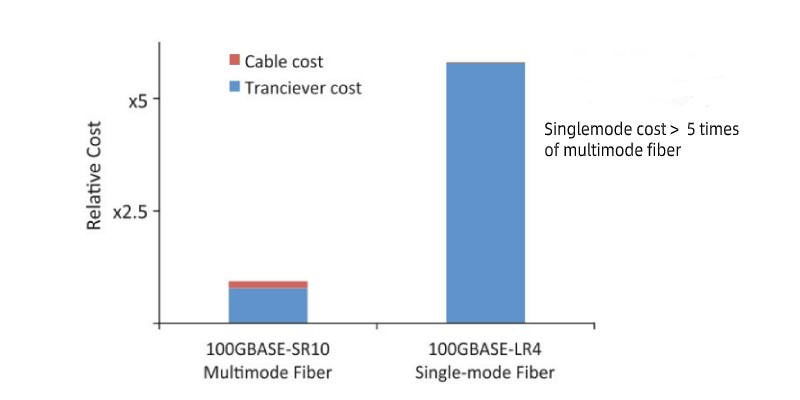
Pic 3: SMF vs MMF Cost
Single mode vs multimode fiber cable type: which should I choose?
When making a decision between single mode and multimode fiber cables, the first factor to consider is the fiber distance which you need actually. For example, in a data center, multimode fiber cables are enough for the distance of 300-400 meters. While in applications that require distance up to several thousands of meters, the single mode fiber is the best choice. And in applications that can use single mode and multimode fiber, other factors like cost and future upgrade requirements should be taken into consideration for your choice.
Related Products
Related Article
KVM Switches Frequently Asked Questions
Frequently Asked Questions for the KVM switches
Server Rack Enclosure Cabinet Buying Guide
How to select a right server rack cabinet enclosure
What is IP55 Outdoor waterproof Enclosure
What is IP55 Outdoor waterproof or weatherproof electrical Enclosure?
NEMA Outdoor Telecom Enclosures Solutions
NEMA 4,NEMA 4 Rated Outdoor Telecom Enclosures Solutions Provider
Outdoor Cabinet Enclosure Air Conditioner
Outdoor cabinet air conditioners keep your equipment cool outside
Multimode Fiber Cables: OM1,OM2,OM3, OM4,OM5
The Differences between OM1,OM2,OM3,OM4 and OM5 MMF

